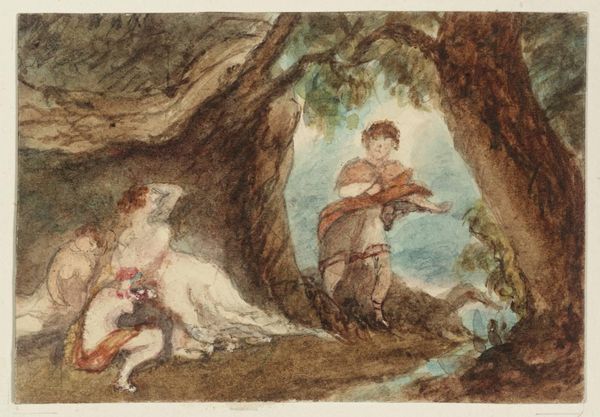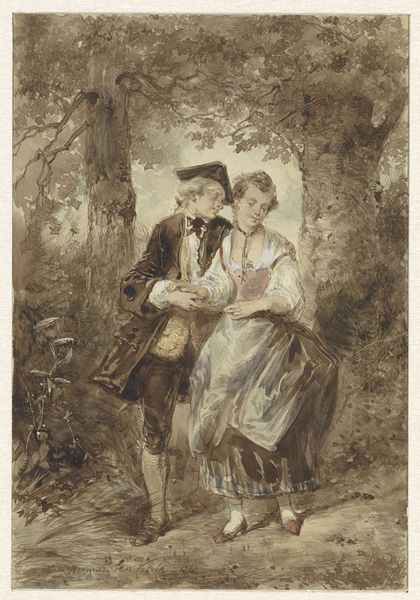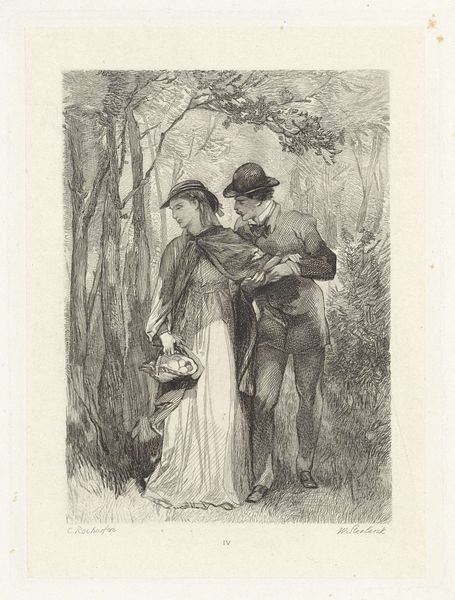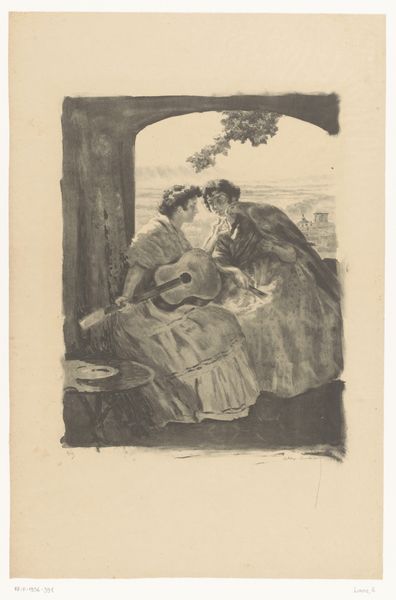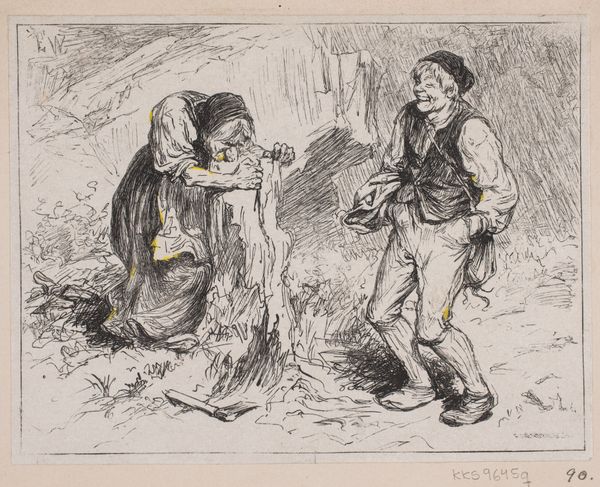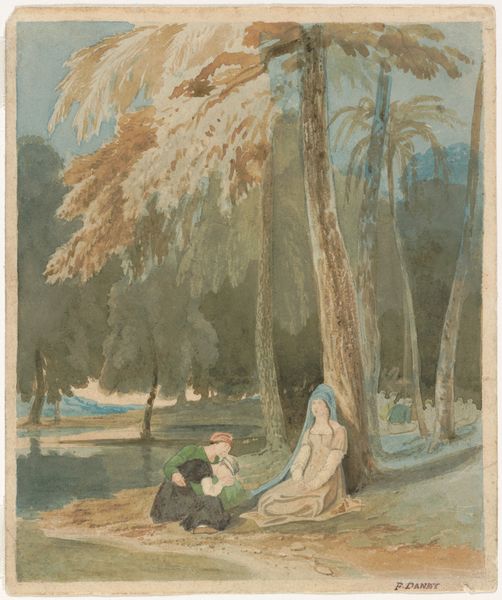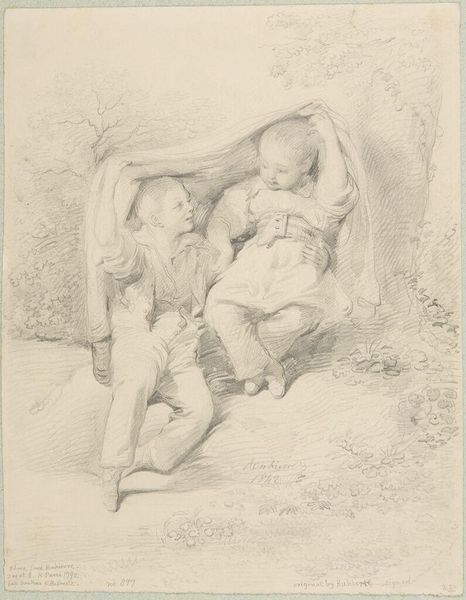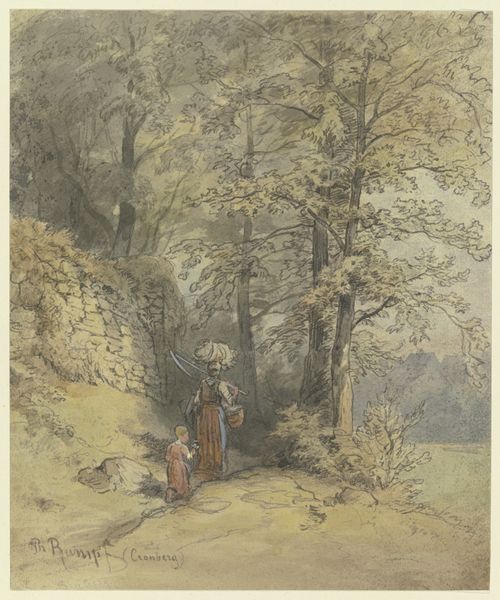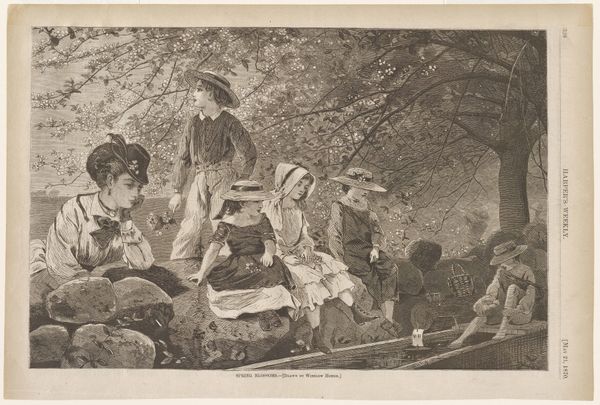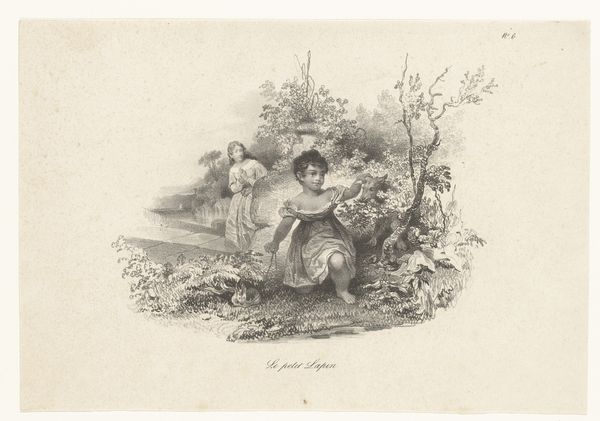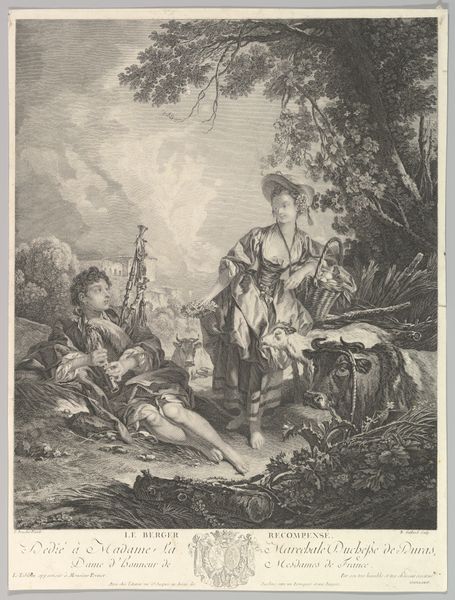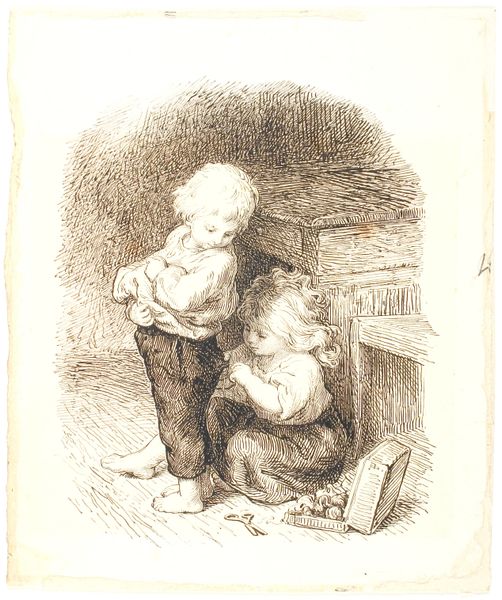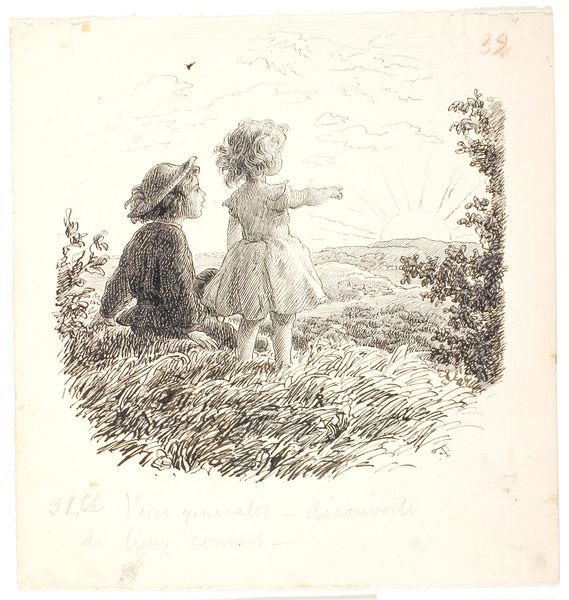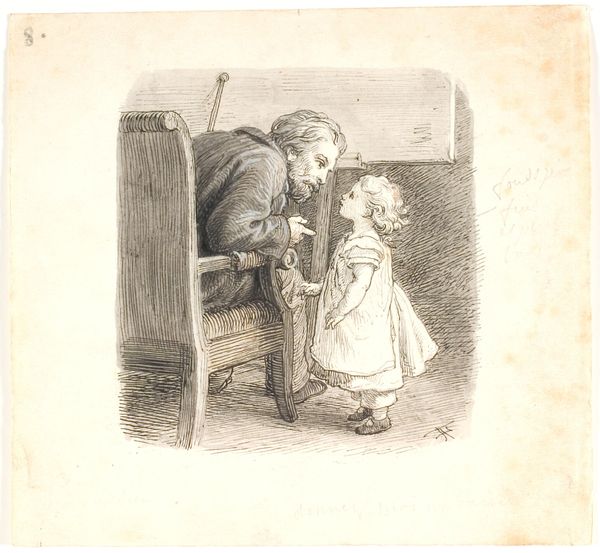
Dimensions: height 165 mm, width 303 mm
Copyright: Rijks Museum: Open Domain
Curator: Ah, the peace. The gentle brushstrokes, the dappled light...it makes you want to grab a book and a blanket and plop right down on that bench, doesn't it? Editor: It certainly has a wistful charm. What are we looking at, precisely? Curator: This lovely scene is "Man, Woman, and Child on a Bench in the Park," crafted in 1863 by Diederik Franciscus Jamin. It's a mixed-media piece, blending watercolor, ink, and pencil on paper. The whole composition feels effortlessly spontaneous, a captured moment. Editor: There’s a defined social structure depicted too, I would suggest. Beyond just "a moment," Jamin uses this scene to portray societal norms of the mid-19th century. Observe the clear separation of the classes: the central bourgeois family contrasted with what appears to be the working-class women standing on the periphery, slightly blurred and further away. Curator: Blur, perhaps, but their placement also adds a feeling of spaciousness. The air circulates, doesn't it? And that discarded top hat...what story does it hold? Was it purposefully removed in a moment of relaxed intimacy or carelessly forgotten? A small, whimsical detail. It really could swing either way. Editor: It could be a statement about masculine vulnerability in public, particularly vis-a-vis family. Its deliberate placement almost seems like a commentary on bourgeois domesticity. I also see it highlighting how even leisure spaces were imbued with signifiers of social standing and performance. Curator: I'm seeing the family in a space of respite, but I also find myself looking beyond the figures to those washes of greens. What does that verdant space hold, and is it as peaceful and easygoing as it seems at first glance? Editor: To me, the romanticized view is layered and strategically conceived. Even these public parks, which in theory belonged to everyone, were still navigated and experienced differently based on social position. I see this artwork less as an unfiltered glimpse and more a curated, socially conscious arrangement of visual elements reflecting power dynamics. Curator: Well, there's something about its unpretentious intimacy that really hooks me, but thanks, that's given me more food for thought. Editor: Precisely; the politics of art and representation continually deepen my appreciation.
Comments
No comments
Be the first to comment and join the conversation on the ultimate creative platform.
